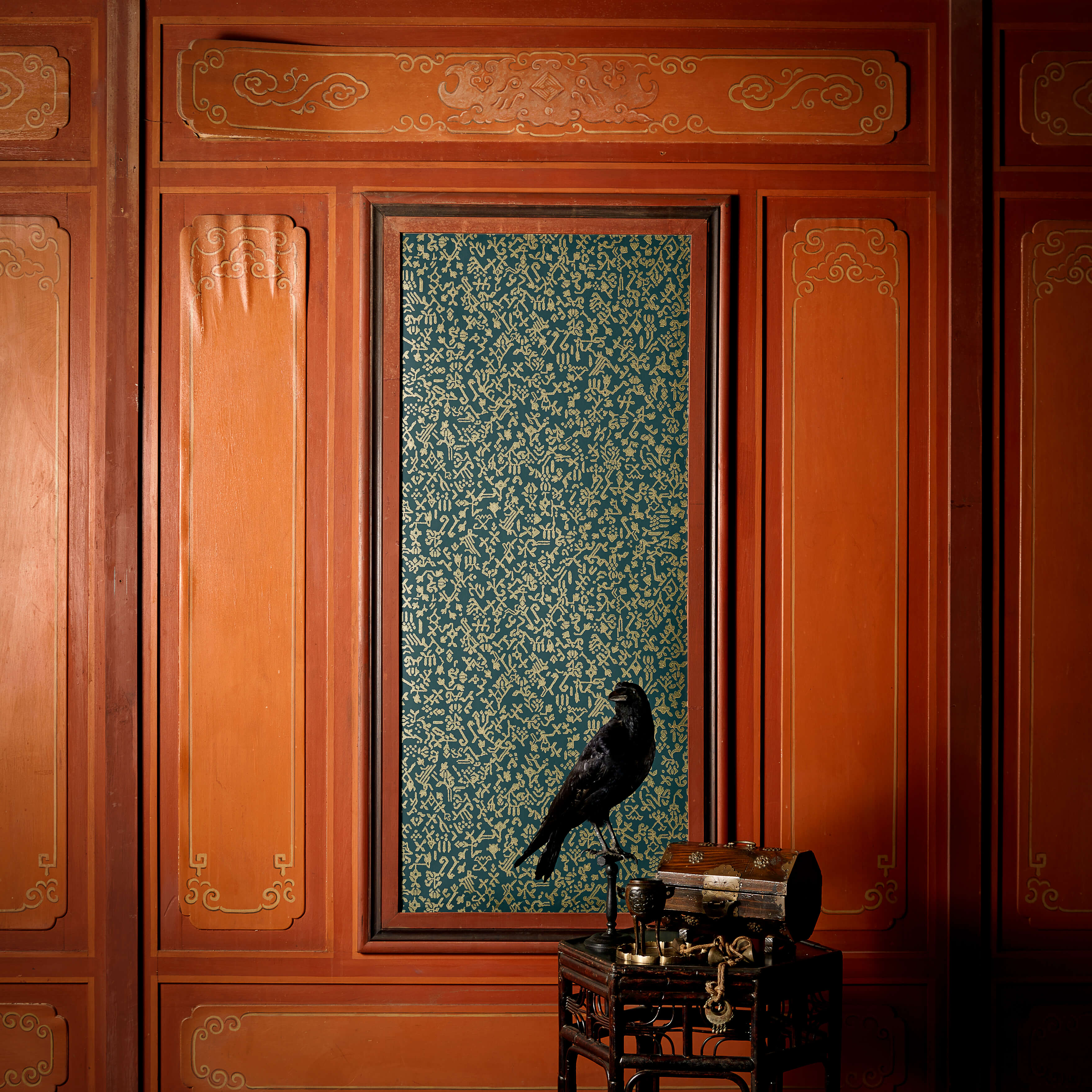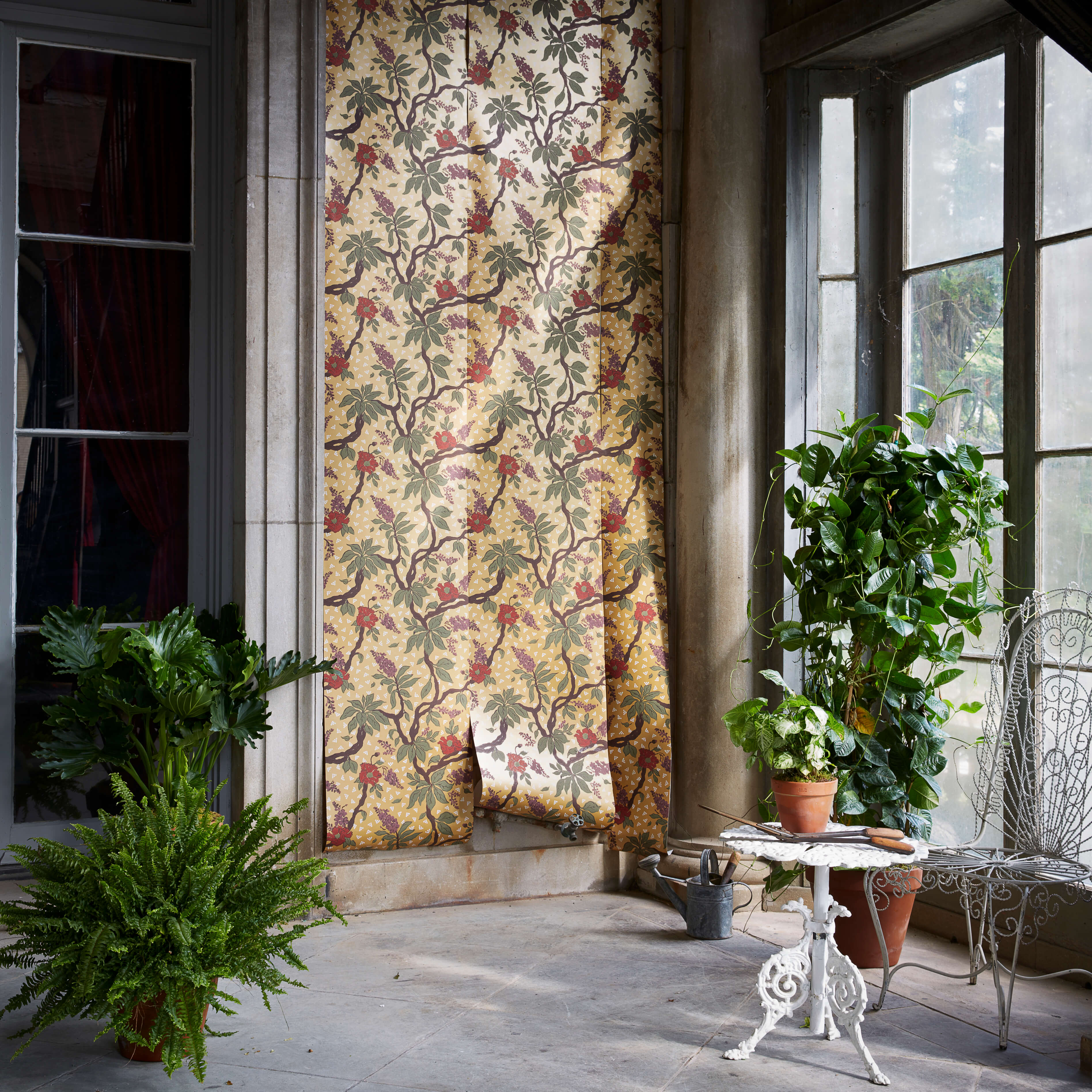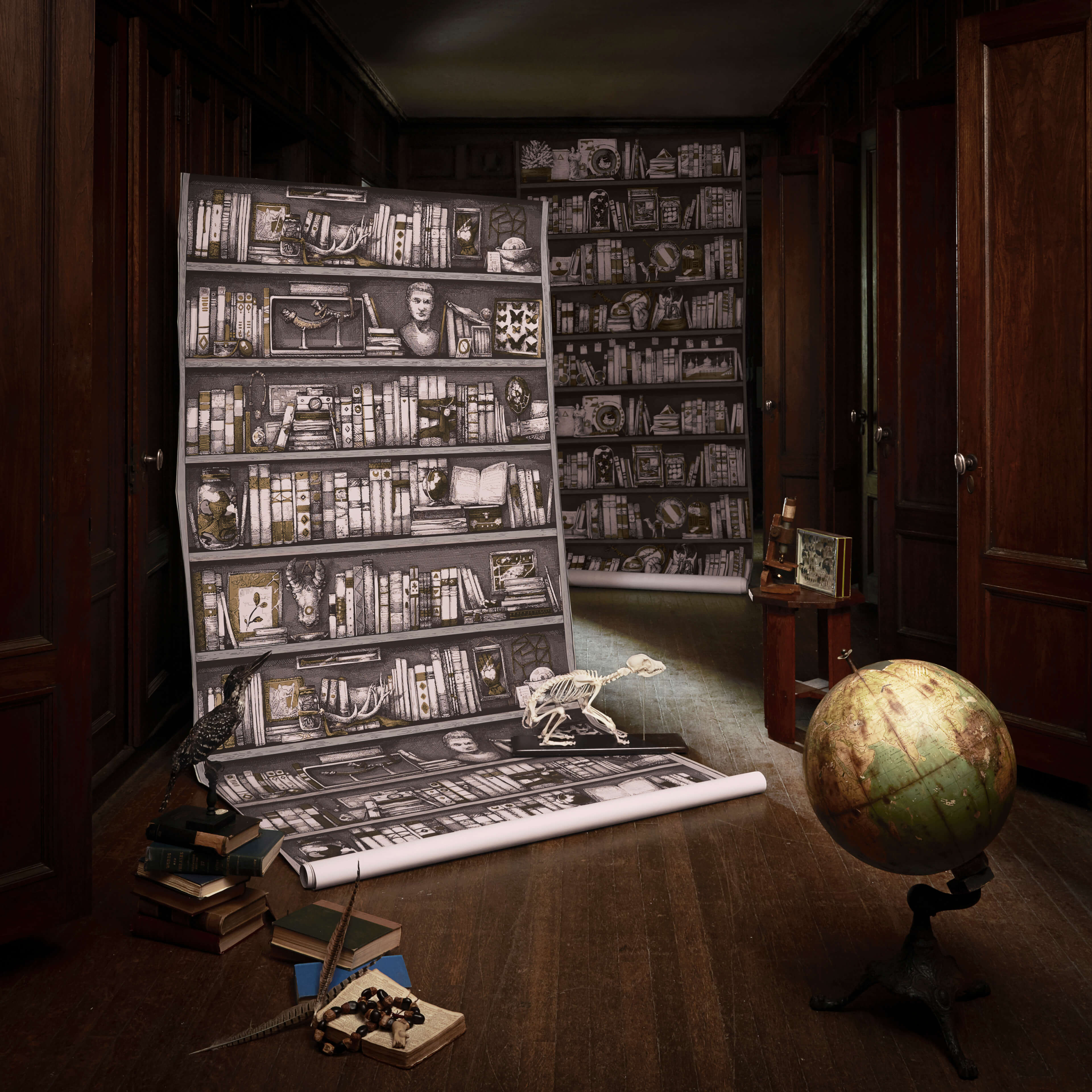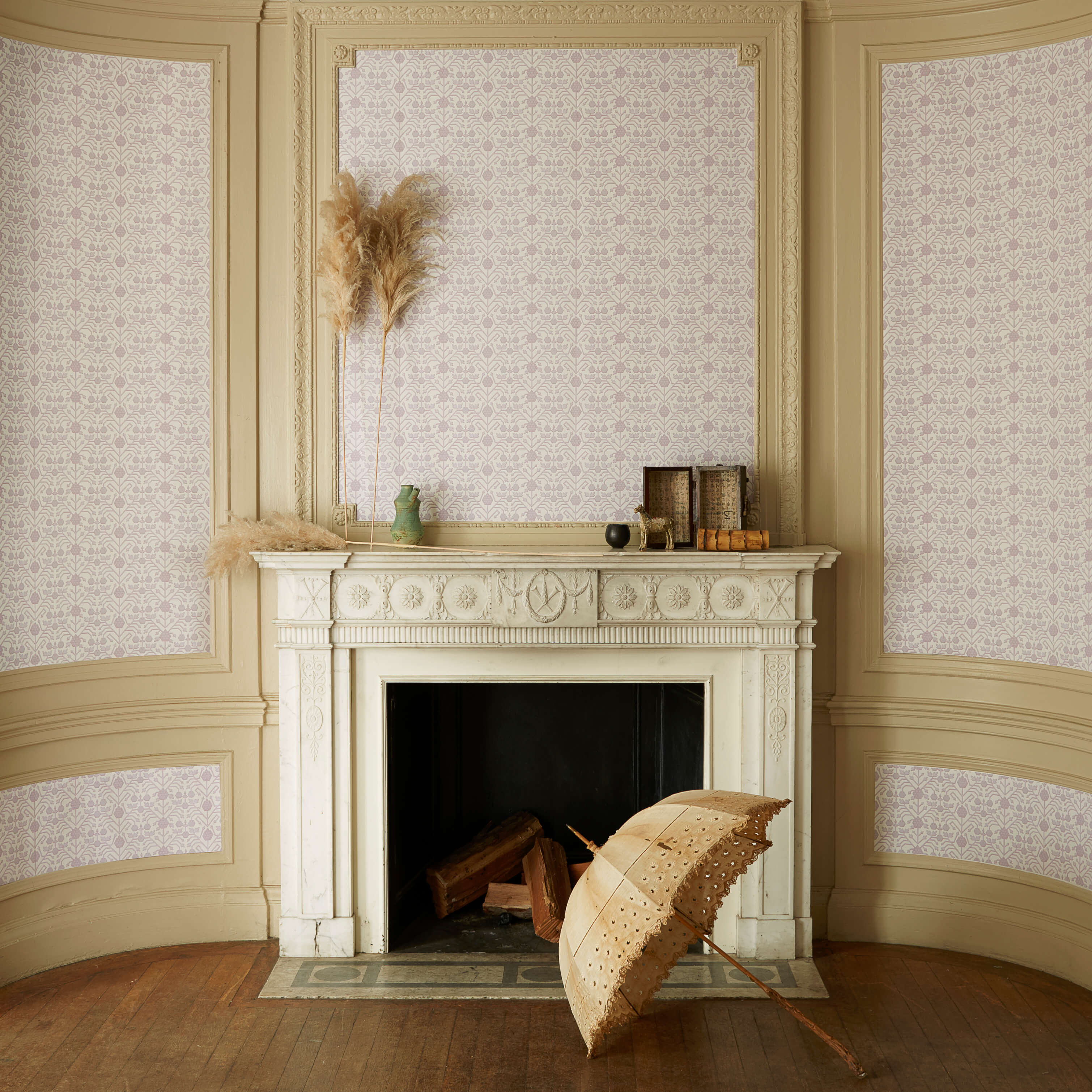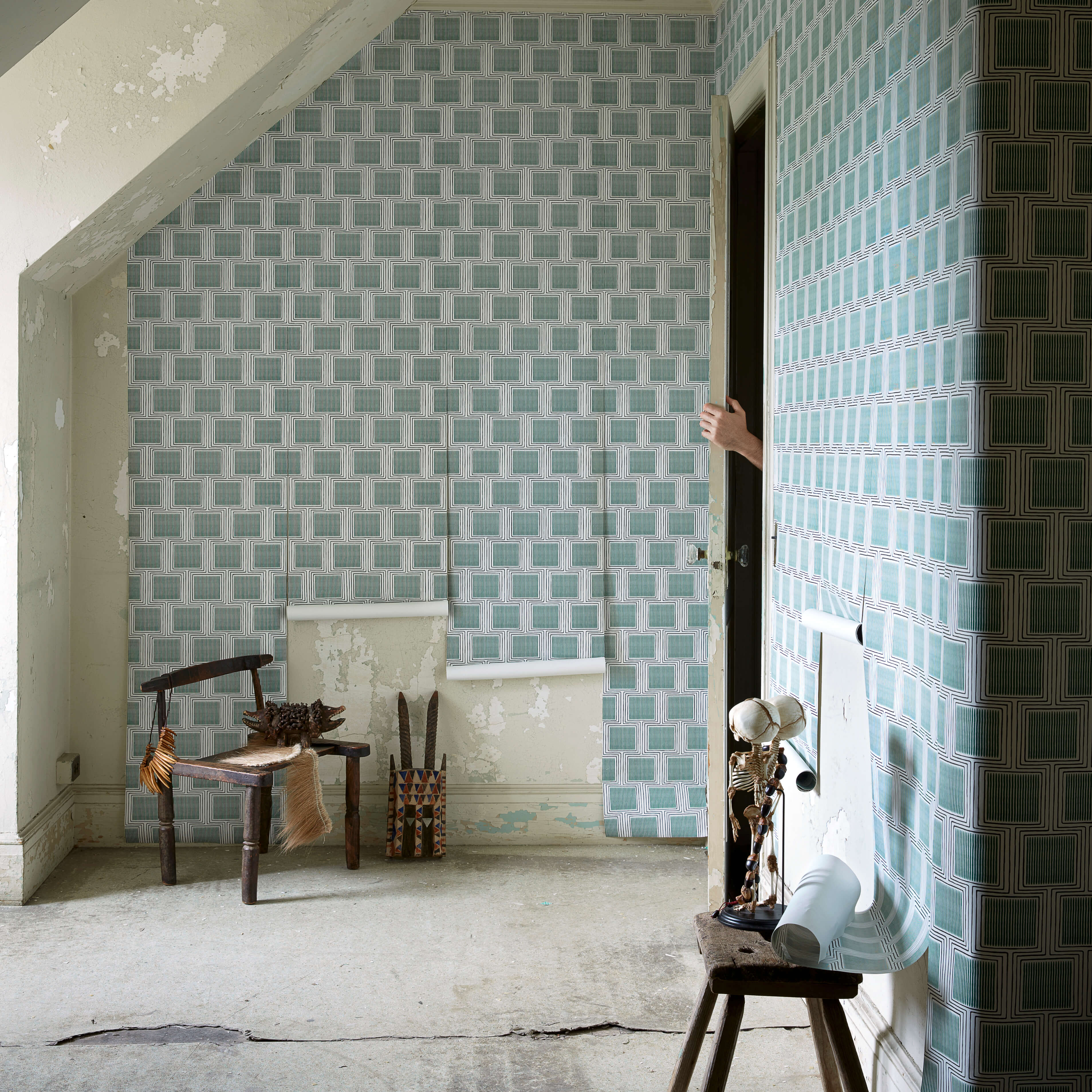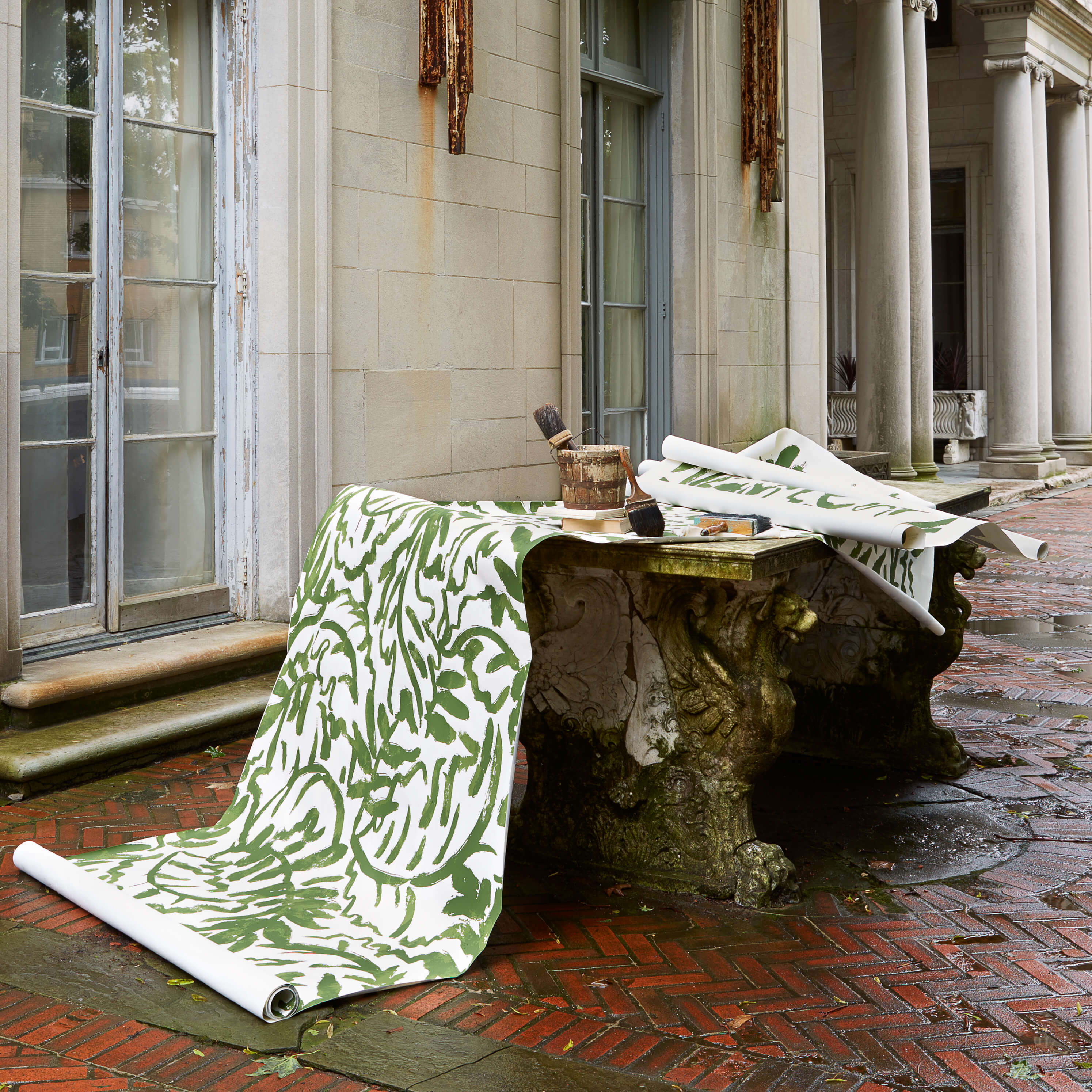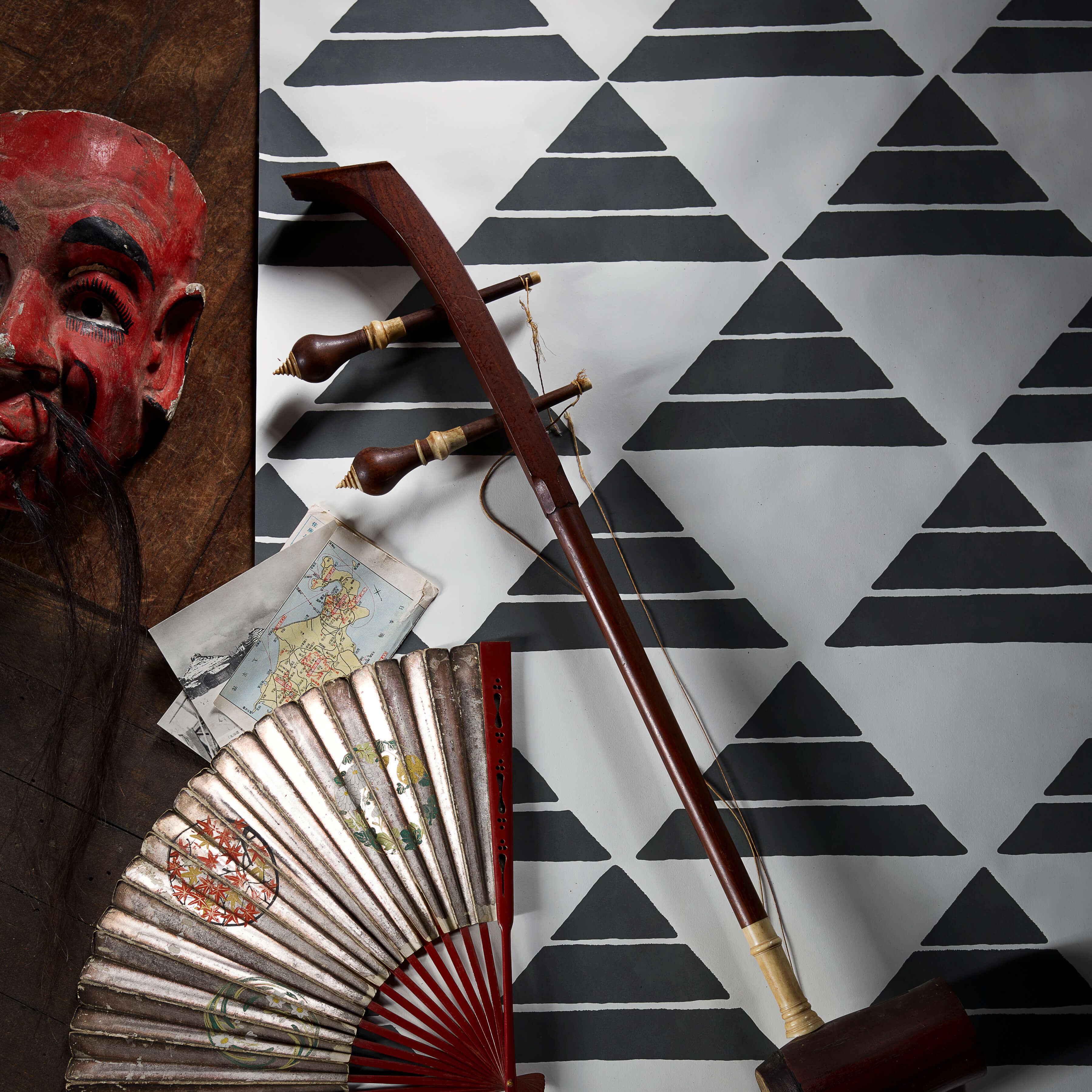WUNDERKAMMER
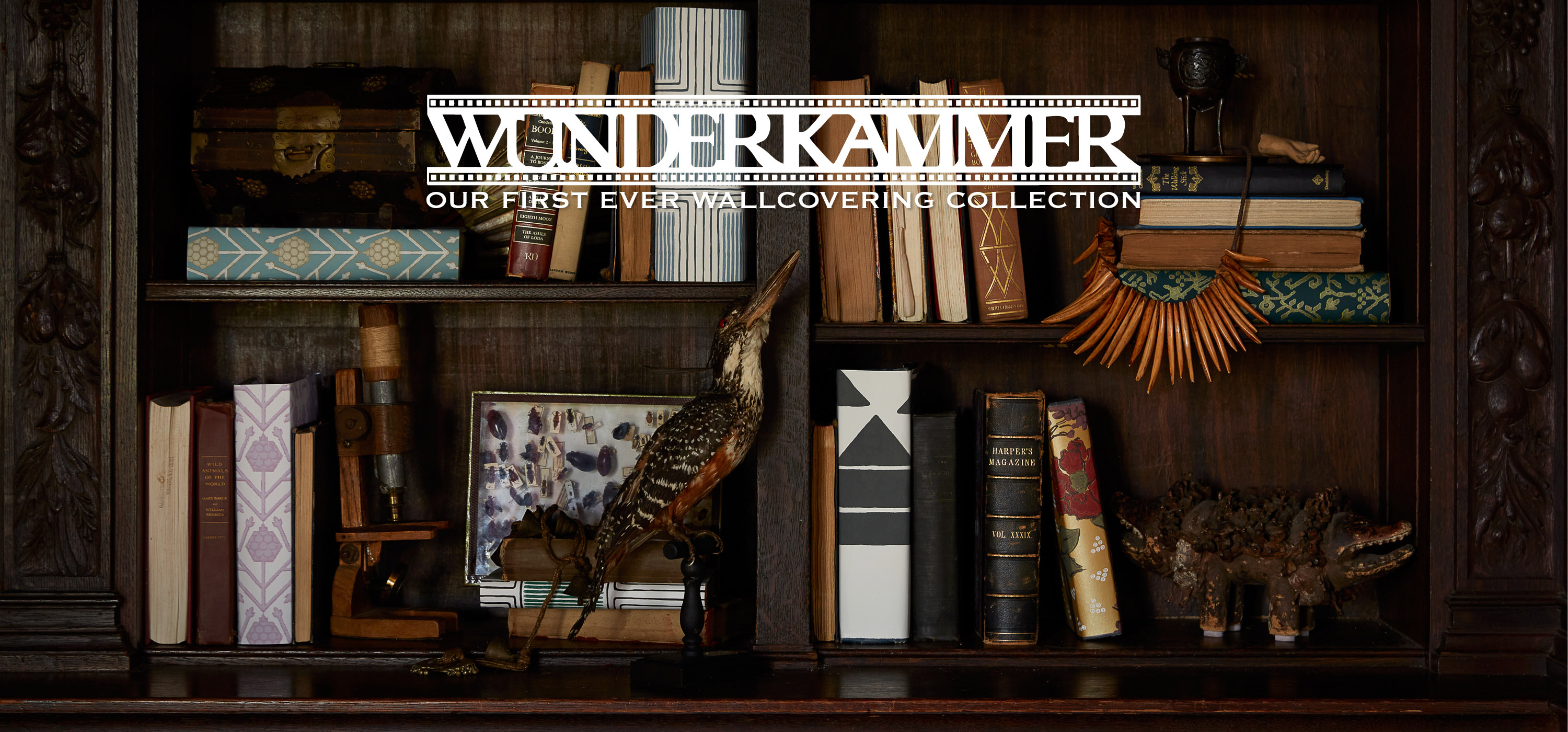
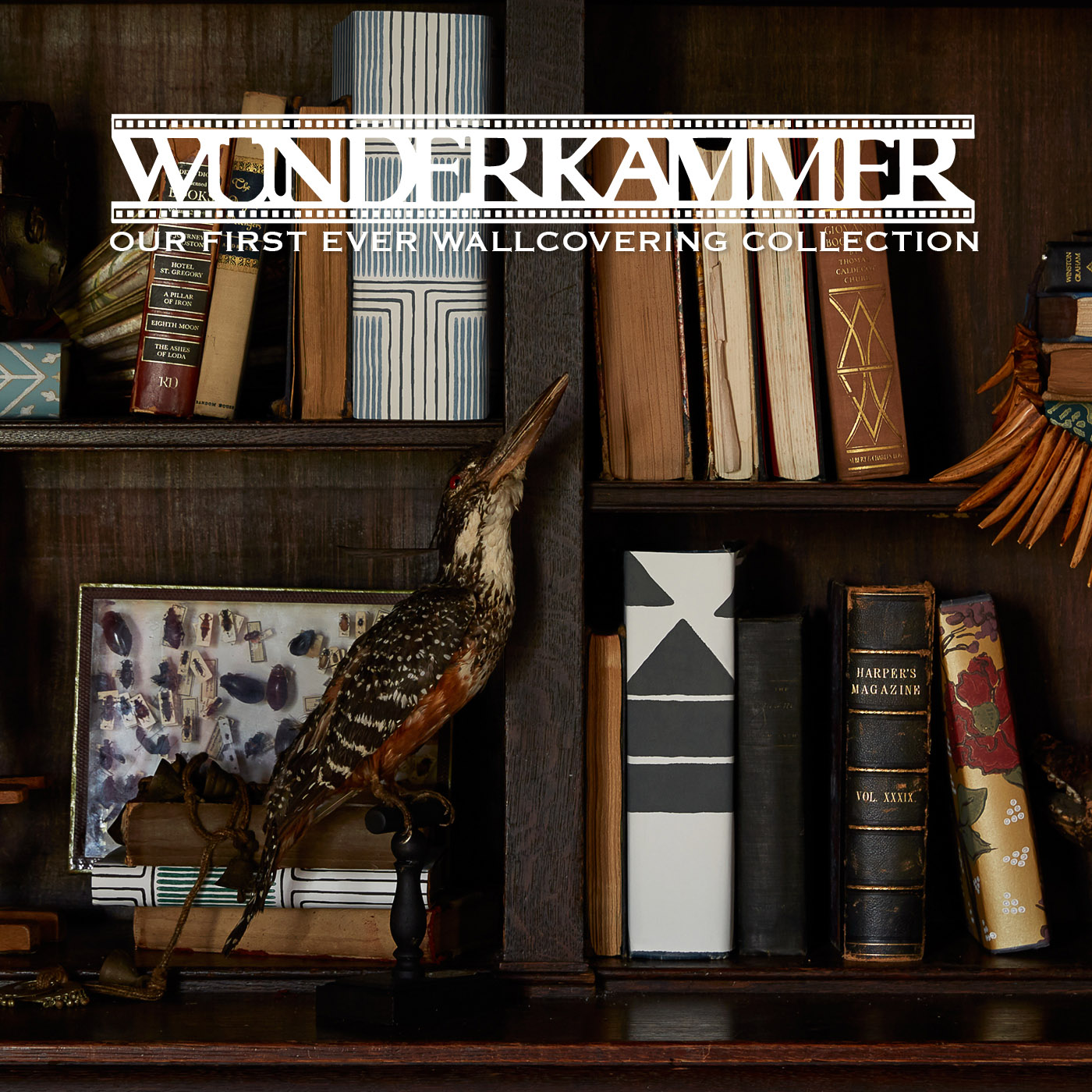
A cabinet of curiosities, WUNDERKAMMER is an archive of ephemera. Since the sixteenth century, collectors have amassed natural specimens in display cases, making meaning from objects, memories and associations. In that tradition, our first wallpaper assemblage translates our own taxonomies into patterns. Botanicals branch and bloom, line drawings wind their way across walls, and trompe l’oeil illusions transform flat surfaces into surreal assortments of charms and talismans. Each paper evokes a world of mystery and delight, revealing itself anew with every look.
AUSPICIOUS
In ancient Rome, auspices were fortune tellers who tracked the skies and followed the flights of birds to predict events. Today, the word auspicious connotes divine luck, and auspicious emblems appear across cultures. Informed by a Tibetan rug woven with fortunate blessings, this enigmatic pattern speaks a cryptic language of signs and symbols — a testament to the impulse to find meaning in mystery.
LES BAOBABS AMOUREUX
In Madagascar, not far from the well–known Avenue of the Baobabs, are Les Baobabs Amoureux. Entwined together, these two giant baobab trees inspired a local legend, in which a young boy and girl from separate villages fell in love. Each promised in arranged marriages to another, they prayed for a way to be together. In response, the baobabs grew and met, forever inseparable. Against an opalescent field of mica wallpaper, branches interlace, sprouting leaves and flowers that seem to glow against the surface sheen.
CURIOSITIES
Conceived as a surreal library, CURIOSITIES is our trompe l’oeil take on a bookcase. An eclectic assortment of books, botanicals and curious objects sprawl across a series of shelves and niches. Inspired by antique engravings, the crosshatch pattern is hand–printed on two panels, each 54” wide. The panels can be matched at any point, allowing the design to be installed in endless combinations. Each artifact, book, and memento invites closer study, beckoning the viewer to return again and again.
KHOTAN
An adaptation from one of our most beloved patterns, KHOTAN is named for an ancient Central Asian city along the Silk Road. An early example of cross–cultural textile design, Khotan carpets combined Chinese geometry with Middle Eastern motifs and Western color palettes. In a nod to the complexity of those traditions, our design includes an amalgam of ingredients — each branching, blooming and growing into a greater whole.
NTAMA
NTAMA’s floating, narrow lines are loosely inspired by Ashanti Liar’s Cloths. These West African patterns are woven with a floating warp technique, in which warp stripes step across the cloth at regular intervals, producing a fretwork of fine, rhythmic strokes. Named by Western researchers, the cloth was believed to be worn by Ashanti kings to compel people to tell the truth. NTAMA’s shifting lines are inset in a pattern that plays with illusion, optics and repetition.
SAUVAGE
SAUVAGE is an homage to the wilderness — be it deep within the jungle or the one stirring in the heart. Inspired by the patron saint of painters, Henri Matisse, SAUVAGE’s unencumbered brushstrokes balance wild freedom with refined form. The hand–printed pattern is fearless and expansive, a leafy canopy of brilliant color.
UROKO
The word for “Uroko”, one of our most recognizable patterns, loosely translates from Japanese as ‘scale’, like that of a fish or snake. The design draws inspiration from Kiyohime, a shape–shifting folk character of Japanese Noh dramas. Often depicted caught between human and dragon form, she wears a geometric kimono. Hand–printed to achieve subtle surface variations, UROKO’s watery shades unhinge the structured pattern and give it a fluid, mercurial quality.


